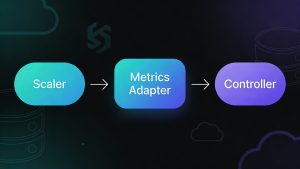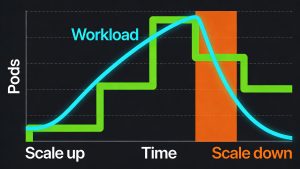JavaScript frameworks are indispensable tools for efficiently building web applications. This article delves into the leading JavaScript frameworks of 2025, examining their key features and helping developers select the most suitable option for their upcoming projects.
Key Takeaways
- JavaScript frameworks streamline development by offering reusable components and facilitating project integration.
- Understanding the distinctions between frameworks and libraries aids developers in choosing the right tools based on project requirements.
- Emerging trends in 2025 include server-side rendering (SSR) and static site generation (SSG), emphasizing the need for performance optimization and enhanced user experience.
What Are JavaScript Frameworks?
JavaScript frameworks consist of pre-written code that provides a structured foundation for web application development. They serve as a toolbox filled with ready-made code, enabling developers to create websites or applications more quickly and efficiently. These frameworks offer a comprehensive set of tools, structured architecture, and built-in functionalities that significantly enhance web application design and development.
Utilizing JavaScript frameworks simplifies the coding process, promotes component reusability, and provides tools for easier project integration. This approach not only makes development smoother but also helps maintain consistency across applications. By managing common programming patterns, frameworks allow developers to build on existing features without starting from scratch.
JavaScript frameworks have become essential in modern web development by establishing rules and guidelines that organize the development process, making it easier to create complex applications. Given JavaScript’s dominance in web application development, these frameworks are crucial for efficient practices.
Component-Based Architecture
A defining characteristic of modern JavaScript frameworks like React is component-based architecture. This approach divides applications into smaller, reusable components, each responsible for a specific part of the user interface. This structure enhances code reusability and maintainability since developers can reuse components across various parts of an application or even across different projects.
A significant advantage of this architecture is that changes in one component do not impact others, simplifying maintenance. This modularity boosts productivity by allowing developers to focus on individual components without concern for the entire application.
Data Binding Techniques
Data binding is a core technique in JavaScript frameworks that synchronizes user interfaces with data models. Frameworks implement one-way and two-way data binding techniques to efficiently sync UI components with data models, which is essential for creating dynamic and interactive interfaces.
The Model-View-ViewModel (MVVM) architecture comprises three primary components: Model, View, and ViewModel. The independence of these components enhances efficiency and reduces errors by enabling separate development and testing. The ViewModel acts as an intermediary that facilitates communication between the View and Model while managing application logic.
In MVVM architecture, changes in the Model are communicated to the ViewModel, which then updates the View, establishing a clear data flow. This separation of concerns streamlines development while simplifying debugging and maintenance.
Routing Capabilities
Routing within JavaScript frameworks allows developers to create a navigation structure for single-page applications, enhancing user experience. By managing navigation and rendering different views within an application, routing capabilities ensure seamless and scalable network applications.
State Management Solutions
State management tools are vital in JavaScript frameworks for maintaining consistency and performance in complex applications. These tools manage state across components, ensuring that an application’s data remains consistent and up-to-date.State management solutions are especially critical in large-scale web applications where handling intricate state logic can be challenging. Synchronizing state throughout the application helps maintain performance and reliability.
JavaScript Frameworks vs. Libraries: Key Differences
JavaScript frameworks and libraries serve different purposes in web development. Frameworks provide comprehensive toolkits with pre-written code libraries designed to enhance efficiency in web application development. They guide the development process with built-in functionalities and systematic architecture.
Conversely, libraries focus on specific functionalities, granting developers more flexibility to choose what they need for their projects. While frameworks dictate a particular structure for application development, libraries allow developers to select components that best suit their needs without imposing a rigid framework.
As technology evolves, JavaScript frameworks continuously adapt to offer better solutions for developers, ensuring they remain relevant in modern web development. Understanding these differences helps in selecting appropriate tools based on project requirements.
Project Requirements Analysis
Evaluating the size and specific needs of a project is crucial when determining which JavaScript tool to use. The decision between a framework or library depends on factors like project complexity, scalability needs, and desired control over the application’s structure.
Learning Curve and Community Support
The learning curve associated with JavaScript frameworks varies; however, user-friendly options can lead to faster development cycles and easier onboarding for new developers. For instance, React is often regarded as one of the easiest frameworks to learn, making it ideal for beginners.A supportive developer community plays a significant role in problem-solving and skill enhancement. Frameworks with large communities like React enable developers to seek assistance from experienced peers, facilitating troubleshooting efforts. Robust documentation and regular updates are vital for effective learning, providing a solid foundation for developers.
Integration with Other Tools
Evaluating a framework’s integration capabilities with other libraries can enhance its functionality. A well-defined ecosystem of extensions allows for added features and improved project flexibility.Vue.js is recognized for its adaptability and seamless integration with other libraries and existing projects. This flexibility enables developers to enhance applications by incorporating additional tools and plugins into their workflow.
Top JavaScript Frameworks in 2025
As JavaScript remains the most widely used programming language in web development, several frameworks stand out due to their popularity, versatility, and community support:
- React.js
- Angular
- Vue.js
- Svelte
- Next.js
React.js has consistently been at the forefront as the leading frontend framework due to its component-based architecture and robust community backing. Angular is known for its suitability for large-scale applications while Ext JS excels at enterprise-level capabilities.Vue.js is celebrated for its simplicity and progressive approach alongside React and Angular. Frameworks like Express.js cater specifically to backend development while Meteor.js supports full-stack JavaScript applications—showcasing the diversity within the ecosystem.
React
Developed by Facebook, React.js features a component-based architecture that facilitates creating reusable UI components. This enhances code maintainability while simplifying management of complex applications. React’s virtual DOM efficiently updates the actual DOM resulting in responsive user interfaces.
React’s versatility allows it to be used across various platforms including web and mobile applications. The strong community support translates into abundant resources, tutorials, and third-party libraries available for developers—making it appealing for both newcomers and seasoned professionals alike.
Angular
Angular offers features like two-way data binding, modular structure, and dependency injection which streamline development processes. Utilizing TypeScript enhances maintainability making it a preferred choice for large-scale projects.
Angular’s component-based architecture promotes code reusability essential for effectively managing complex applications while its model-view-controller (MVC) design pattern supports organized development processes—ideal for enterprise-grade applications requiring robust performance.
Vue.js
Vue.js focuses primarily on building user interfaces with key features such as two-way data binding and Virtual DOM that ensure efficiency. Its simplicity allows adaptation across various project scales from small initiatives to complex applications.
Vue.js’s rapid rise in popularity stems from its numerous advantages including built-in support for state management animations enhancing versatility while ensuring simple maintenance through backward compatibility during updates.
Svelte
Svelte adopts a unique approach by compiling components into optimized JavaScript reducing runtime overhead—allowing faster applications without relying on virtual DOMs. Its component-based architecture enhances reusability making it competitive among other frameworks.
Known for creating efficient reactive web applications with minimal boilerplate code Svelte streamlines developer experiences—appealing particularly to those seeking high-performance solutions without added complexity.
Next.js
Next.js is recognized as a powerful framework designed specifically for server-side rendering (SSR) alongside static web applications using React.js—improving overall performance while enhancing SEO effectiveness through pre-rendering content on servers leading faster initial loads.
Next.js simplifies development via automatic code splitting coupled with an intuitive routing system—enhancing performance further through SSR capabilities generating pages server-side resulting in quicker load times overall improving user experience significantly.
Emerging Trends in JavaScript Frameworks
Keeping abreast of advancements within JavaScript frameworks is crucial when choosing one suited best towards specific projects moving forward into 2025:
- React has introduced Server Components enhancing server-rendered content management capabilities.
- The Solid framework continues developing towards achieving stable releases showcasing growth potential.
- Nuxt framework nears new version release boasting nearly 220 modules enhancing flexibility significantly within its ecosystem.
These advancements underscore adapting trends necessary towards optimizing skills ensuring successful outcomes amidst rapidly evolving landscapes within web development realms today!
Server-Side Rendering (SSR)
SSR adoption continues rising aimed at enhancing user experiences alongside optimizing SEO efforts through modern frameworks such as Next.js & Nuxt.js—allowing pages rendered server-side before reaching clients ensuring quicker initial loads improving search engine rankings overall!
Integrating SSR provides robust solutions geared towards building high-performance apps desired by many developers seeking optimal user experiences alongside visibility improvements across search engines alike!
Static Site Generation (SSG)
SSG has emerged as preferred methodology due largely efficiency simplicity offering benefits such as fast-loading websites enhancing overall user satisfaction!
Security remains paramount since static sites face reduced vulnerabilities compared dynamic counterparts thus delivering higher security standards overall!Scalability remains key allowing static sites handle increased traffic loads effectively while minimizing server strain—cost-effective solutions many organizations seek today!
Increasingly popular SSG methodologies allow reliable high-performance app builds seamlessly accommodating growth demands faced regularly!
Improved Developer Experience
Innovation focused upon enhancing developer experiences through improved tools documentation continues gaining traction! Emerging resources prioritize simplifying workflows boosting productivity vital towards overall satisfaction amongst programmers working within these environments!
Ongoing innovations directly influence future trajectories concerning JavaScript developments emphasizing importance placed upon enhancing experiences not only improves individual productivity but contributes positively towards success achieved during various projects undertaken collectively!
Choosing the Right Framework for Your Project
Selecting an appropriate JavaScript framework ensures alignment with technical requirements while promoting efficient performance throughout project lifecycles! Evaluating aspects such as size complexity scalability remains essential when making informed decisions regarding selection processes involved therein!
Each framework possesses unique features catering specifically towards differing project needs thus understanding these attributes assists greatly during selection phases undertaken respectively!
Comprehensive documentation along with learning resources plays vital roles ensuring effective utilization maximized potentials derived from chosen solutions available throughout industry landscapes today!
Assessing Project Needs
Evaluating unique characteristics inherent within specific projects proves crucial when determining optimal selections amongst various available options! Important considerations include size complexity scalability performance requirements demanding attention accordingly!
Enterprise-level apps necessitate robust selections like Ext JS due powerful feature sets scalability options available therein!Choosing suitable frameworks aligned closely alongside complexities scalability demands ensures effective handling growth workloads encountered regularly throughout respective lifecycles!
Evaluating Long-Term Viability
Long-term viability remains paramount when selecting suitable choices ensuring continued efficient app performances over time! Angular’s strong community backing emphasizes best practices favoring enterprise-scale implementations significantly!Scalability proves critical especially concerning projects anticipating growth impacting long-term viability directly! User feedback indicates preference towards versatile scalable structures such as Ext JS yields preferred long-term benefits observed consistently over time!
Cost & Resource Considerations
Framework selections may incur licensing subscription costs significantly affecting budgets hence consideration necessary regarding overall financial implications involved therein!Ext JS often proves economically beneficial long-term compared free alternatives making cost-effective choices viable over time! Evaluating costs resource requirements aids informed decision-making balancing budget constraints alongside robust feature necessities required effectively throughout respective lifecycles!
Summary
In conclusion; understanding pivotal roles played by various javascript-frameworks enhances modern-day web-development practices providing structured foundations increasing productivity levels facilitating efficient scalable app creations successfully achieved over time!Recognizing differences between frameworks libraries alongside identifying top contenders worth considering remains essential towards informed decision-making processes undertaken respectively!
React Angular Vue Svelte Next.js represent best javascript-framework choices available today each offering unique attributes catering diverse project needs effectively met accordingly!Staying updated regarding emerging trends such as server-side rendering static site generation ensures leveraging latest advancements builds high-performance apps desired collectively experienced across industry landscapes observed consistently over time!
Ultimately selecting appropriate framework involves assessing needs evaluating long-term viability considering cost resource implications effectively balancing all elements together ensures successful outcomes achieved collectively throughout respective lifecycles pursued accordingly!
Read more such articles from our Newsletter here.



